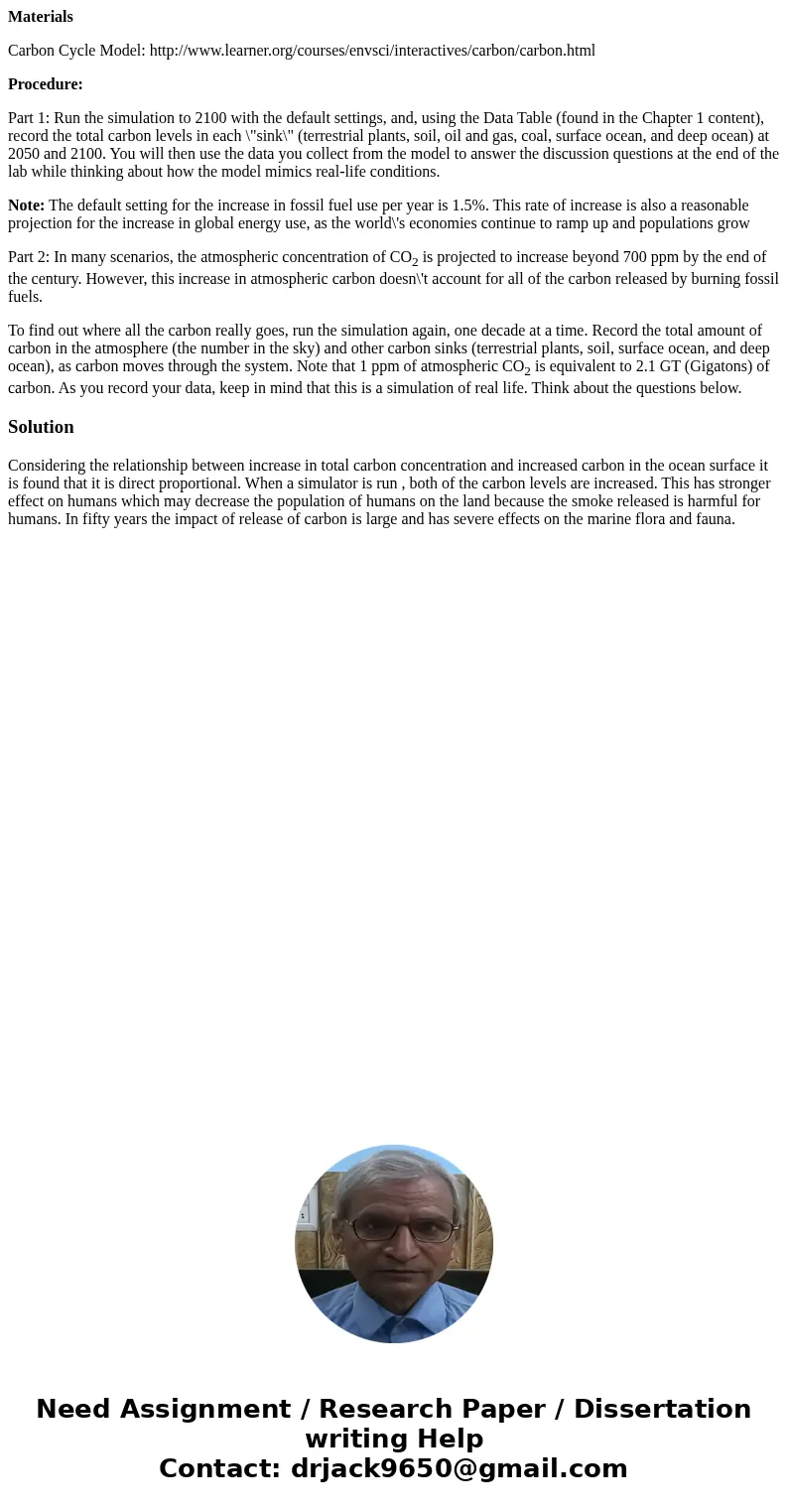Materials Carbon Cycle Model httpwwwlearnerorgcoursesenvscii
Materials
Carbon Cycle Model: http://www.learner.org/courses/envsci/interactives/carbon/carbon.html
Procedure:
Part 1: Run the simulation to 2100 with the default settings, and, using the Data Table (found in the Chapter 1 content), record the total carbon levels in each \"sink\" (terrestrial plants, soil, oil and gas, coal, surface ocean, and deep ocean) at 2050 and 2100. You will then use the data you collect from the model to answer the discussion questions at the end of the lab while thinking about how the model mimics real-life conditions.
Note: The default setting for the increase in fossil fuel use per year is 1.5%. This rate of increase is also a reasonable projection for the increase in global energy use, as the world\'s economies continue to ramp up and populations grow
Part 2: In many scenarios, the atmospheric concentration of CO2 is projected to increase beyond 700 ppm by the end of the century. However, this increase in atmospheric carbon doesn\'t account for all of the carbon released by burning fossil fuels.
To find out where all the carbon really goes, run the simulation again, one decade at a time. Record the total amount of carbon in the atmosphere (the number in the sky) and other carbon sinks (terrestrial plants, soil, surface ocean, and deep ocean), as carbon moves through the system. Note that 1 ppm of atmospheric CO2 is equivalent to 2.1 GT (Gigatons) of carbon. As you record your data, keep in mind that this is a simulation of real life. Think about the questions below.
Solution
Considering the relationship between increase in total carbon concentration and increased carbon in the ocean surface it is found that it is direct proportional. When a simulator is run , both of the carbon levels are increased. This has stronger effect on humans which may decrease the population of humans on the land because the smoke released is harmful for humans. In fifty years the impact of release of carbon is large and has severe effects on the marine flora and fauna.
 Homework Sourse
Homework Sourse